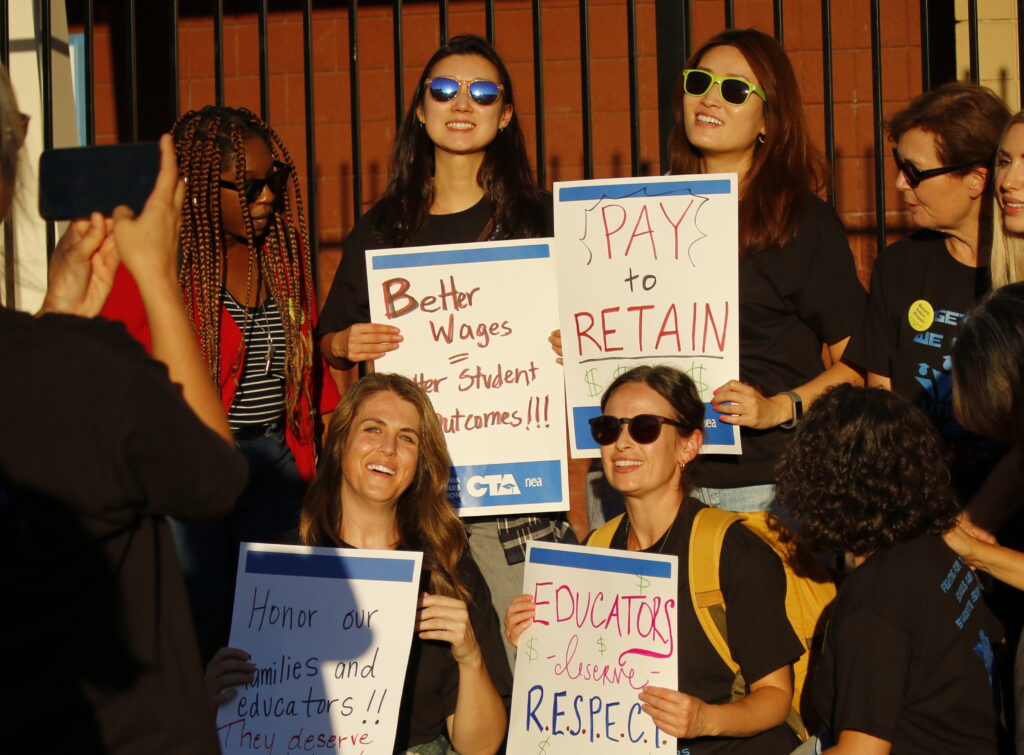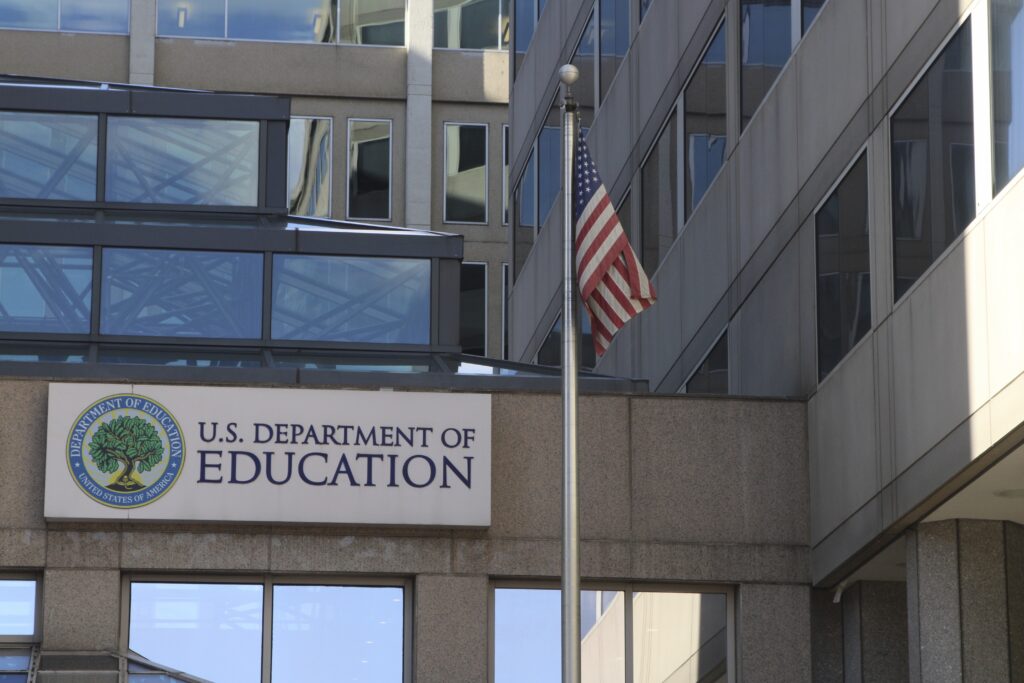
A group of WCCUSD school psychologists at a union contract rally in 2023.
Courtesy of John Zabala
West Contra Costa Unified School District’s school psychologist internship program once flourished. The district recruited from substantial applicant pools from local universities and provided a strong start for beginning school psychologists entering the workforce, often retaining them after the internships ended.
Now, however, in the years since the onset of the COVID-19 pandemic, WCCUSD is struggling to recruit interns and fill vacant school psychologist positions. This means psychologists, considered essential pieces of school environments, are carrying larger case loads and working longer hours, leading to burnout.
WCCUSD, like other districts across the state, is no stranger to staff shortages — the district started the 2023-24 academic year with more than 200 special education paraprofessional vacancies. The shortages have persisted, and on Jan. 31, Public Advocates, a nonprofit civil rights law firm, filed three complaints with the district, alleging some schools failed to provide students with qualified teachers because of problems related to staffing shortages.
School psychologists fill a critical role in school communities, collaborating with administration, teachers and parents to ensure students are succeeding academically, emotionally and behaviorally.
West Contra Costa has struggled with five to seven school psychologist vacancies for the past couple of years. Halfway through the current school year, the district is still dealing with three.
“We’re going to weather, this obviously, but we still have a couple of years in which we are going to have a really significant shortage, and we’re going to have a really significant increase in the demand for services, so we’re kind of in for a little bit of a scary period,” said John Zabala, a school psychologist in the district and the president of United Teachers of Richmond.
California is generally facing a critical shortage of school psychologists. According to the California Association of School Psychologists, the National Association of School Psychologists recommends a ratio of 1 school psychologist for 500 to 750 students. However, California schools on average have 1 per 1,000 students. Some schools have 1 per 3,000 students.
Although WCCUSD’s ratio falls into the recommended range at around 1 school psychologist per 500-550 students, school psychologists in the district still face large caseloads and longer work days, contributing to burnout.
Some districts compensate for shortages by hiring contractors or traveling school psychologists. Emily Springhart, department co-chair of psychology at West Contra Costa, however, said the district has preferred increasing the caseload of school psychologists and extending their work days to deal with the shortage.
“A lot of the report writing and the case management — those things just go home with people,” Springhart said. “I’m sure it’s not great for their own personal health.”
Schools have seen a substantial increase in the number of students requiring mental health and behavioral resources in recent years. In April 2022, 69% of public schools reported that the percentage of students seeking mental health services had increased since the start of the COVID-19 pandemic, according to the National Center for Education Statistics. Covid-19 disrupted early intervention for many students, leading to an increase in the number of students needing support, while the staff who would be able to support them, like school psychologists, have not.
Mary Campbell, a WCCUSD school psychologist and former department chair, said she worries about what the shortages and the resulting burnout could mean for the longevity of the profession.
Springhart said the school psychologist shortage seems to be caused by the same factors triggering shortages of other school staff: inevitable events like retirement, but also financial hardship, forcing people to move out of parts of California with high costs of living.
But another cause lies in the declining number of incoming applicants from universities that typically feed into districts like WCCUSD. Springhart said the number has steadily declined, despite the district having a long and strong history of hiring school psychologists from those programs.
“It seems like all of the districts are kind of fighting over everybody right now, just because there’s not enough people coming out of programs,” Springhart said.
Oanh Tran, school psychology program coordinator for California State University, East Bay, said she’s actually seen an increase of applicants to the program in recent years. But because the Bay Area is home to so many school districts, there aren’t enough school psychologists to go around.
“We have so many districts, so many schools, and just a handful of students are graduating with their PPS (Pupil Personnel Services) credential to service those schools and districts,” Tran said.
Tran said new school psychologists are also experiencing burnout earlier in their careers. Not only are they dealing with more assessment caseloads, but they’re also spending their days putting out fires likely caused by a lack of early intervention.
The best districts, Tran said, prioritize monitoring the needs of their school psychologists, ensuring they have access to helpful mentors, have a manageable caseload, and feel supported by their team. Students are being strategic about finding districts that provide these resources, Tran explained.
“In West Contra Costa, I do remember there was a time where they did have a lot of our practicum and interns,” Tran said. “But now, I think because there are so many districts that are recruiting our students, it’s competitive. It’s so competitive. We only have so many students in our cohort, but we have over 50 districts now participating in our recruitment fair for our students.”
Although West Contra Costa offers competitive pay, especially after salary increases last year, Springhart agreed the shortage has been a regional issue, extending beyond the district. She said more education and recruitment about the profession may be necessary to increase the number of applicants to school psychologist programs.
“I think there are ways that we know that we can attract and keep people in these jobs, which can be very rewarding jobs,” Campbell said, “but not when we’re so under-resourced.”






